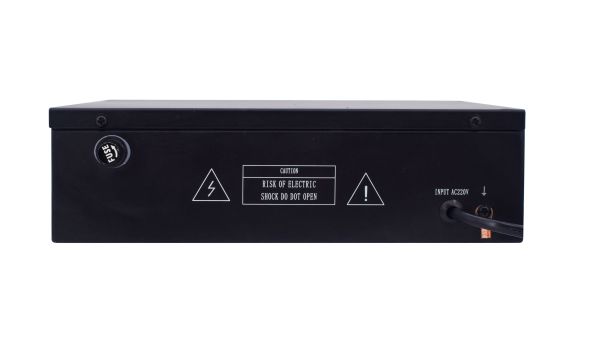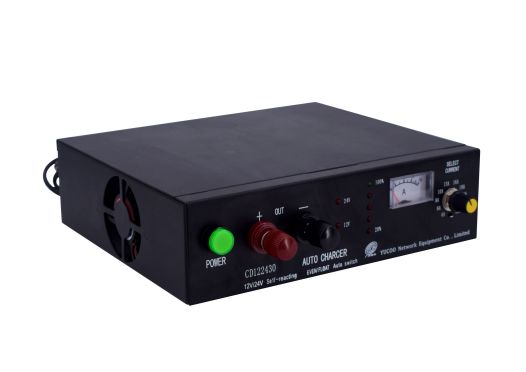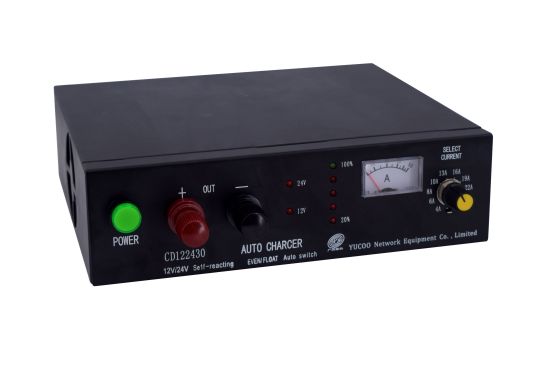News
Battery Charger Market Dynamics: Growth, Innovation, and Future Trends
Click: 782 Date: 03/01/2024 3::14::33 PM
Battery Charger Market Dynamics: Growth, Innovation, and Future Trends

The Battery Charger market is experiencing significant growth, driven by a combination of factors including the increasing adoption of electric vehicles (EVs), rising demand for portable electronic devices, and growing awareness of battery health and maintenance. The market was valued at USD 21,782.90 Million in 2022 and is projected to reach USD 35,096.74 Million by 2030, growing at a CAGR of 6.4% .
Key growth drivers include:
The rapid growth of the EV market, which is driving the demand for battery chargers, particularly fast chargers and home charging stations.
The popularity of smartphones, laptops, tablets, and other portable devices, which is creating a steady demand for portable battery chargers.
Consumers becoming increasingly aware of the importance of proper battery care, leading to a rise in demand for intelligent chargers that optimize battery life.
Government regulations and incentives promoting EV adoption, which is indirectly driving the battery charger market 1.
In addition to these, the growing demand for wireless charging technology, the advent of smart and connected chargers, and the expansion into emerging markets present significant opportunities for battery charger manufacturers. Wireless charging technology offers convenience and eliminates the need for cables, while smart chargers with features like monitoring, diagnostics, and remote control are gaining traction and offer new revenue opportunities.
Regional insights indicate that Asia Pacific is the largest and fastest-growing market for battery chargers, driven by the increasing demand for EVs and portable electronics in China and India. North America is a mature market, but the adoption of EVs is expected to drive further growth. Europe has a strong focus on sustainability, which is driving the demand for smart and energy-efficient chargers.
Innovations in the market include the introduction of new chargers capable of charging an EV in 15 minutes, such as ABB's 350kW EV charger, and the development of a 350kW charging network across Europe by Porsche and Ionity. Other notable developments include Anker's launch of a 100W GaN charger with multiple ports for various devices and Apple's release of its MagSafe Duo Charger with wireless charging for iPhones and Apple Watches.
In summary, the Battery Charger market is poised for significant growth, driven by technological advancements, regulatory incentives, and the increasing demand for portable electronic devices and electric vehicles. This growth is expected to continue, with innovations in charging technology and the expansion into emerging markets playing a crucial role in the market's future trajectory.
The Battery Charger market is characterized by a competitive landscape with several key players. These players are known for their innovative products and services across various sectors, including automotive, consumer electronics, and industrial applications. The market segmentation is primarily based on product type, application, and category, each with its unique market dynamics and trends.
Major Players in the Battery Charger Market:
Accutronics Limited
Analytic Systems Ware Ltd.
Anoma Corporation
Associated Equipment Corporation
Energizer Holdings Inc.
Exide Technologies
Ferro Magnetics Corporation
FRIWO AG
HindlePower, Inc.
Panasonic Corporation of North America
Phihong USA Corporation
Powerbase Industrial (HK) Ltd.
Saft S.A.
Salcomp Plc
Schumacher Electric Corporation
Scud (Fujian) Electronics Co. Ltd.
Shun Shing Standard Corporation Development Ltd.
Spectrum Brands Inc.
Uniross Batteries S.A.S
Yuasa Battery Inc.
These companies are at the forefront of the battery charger market, offering a wide range of products and services tailored to different market segments and applications.
Market Segmentation:
Product Type: The market is segmented based on the type of battery charger, with wired chargers being the dominant segment in 2022 due to their reliable and smooth connection capabilities.
Application: The market is further segmented by the application of the battery chargers, which can include automotive, consumer electronics, and industrial applications. Each application segment has its specific requirements and technologies.
Category: The category segmentation encompasses the different types of batteries that the chargers are designed for, such as lithium-ion, lead-acid, and nickel-cadmium batteries.
The competitive landscape and market segmentation highlight the diversity and complexity of the battery charger market, with key players and segments driving the industry's growth and innovation.
Innovations in Charging Technology: Advancements in Battery Charging
The evolution of battery charging technology has seen remarkable progress, introducing innovations that enhance efficiency, convenience, and safety. Here are some of the key advancements:
Ultra-Fast Wireless Charging: The introduction of ultra-fast wireless charging promises to revolutionize how devices are powered, offering speeds that could charge devices in a matter of minutes. This development aims to eliminate the time-consuming process of traditional charging, making it a thing of the past.
Enhanced Wireless Charging Range: Future advancements in wireless charging technology are expected to significantly expand the charging range, reducing the need for devices to be in close proximity to the charging pad. This innovation opens up new possibilities for wireless charging integration in our daily lives, offering more flexibility and convenience.
Intelligent Wireless Charging: The development of intelligent wireless charging systems is a promising future innovation. These systems would automatically adjust the charging rate based on the power requirements of the device, optimizing the charging process for efficient and safe charging. This technology not only enhances the charging experience but also prolongs the lifespan of device batteries.
Wireless Charging on the Go: The future of wireless charging technology also includes innovations that enable charging capabilities for a wide range of devices on the go, such as cars and wearable devices. This development aims to eliminate the need for cables or power outlets, making it possible to charge devices anywhere.
Multi-Device Charging: Innovations in fast wireless charging have made it possible to charge multiple devices simultaneously, further enhancing convenience. This development allows for a more efficient use of charging infrastructure, reducing the need for multiple charging cables.
Bidirectional Chargers: The concept of bidirectional chargers, which allow electricity to travel both ways, is another significant advancement. This technology enables electric vehicles to not only receive electricity for charging but also to send electricity back through vehicle-to-grid (V2G) energy transfer. This could lead to a more balanced energy grid and even allow homeowners to generate income from excess solar power.
These innovations collectively point towards a future where charging technology is not only more efficient and faster but also more integrated into our daily lives, offering greater convenience and environmental benefits.
North America
North America leads the Battery Charger market with a robust infrastructure, including significant manufacturers and consumers. The region's growth is supported by government incentives, environmental awareness, and investments in charging networks. Technological advancements, such as wireless charging systems, are accelerating the market's growth .
Europe
Europe is a key market for Battery Chargers, focusing on the rapid expansion of charging infrastructure. Stringent emissions regulations and government support accelerate market development. This region's growth is driven by initiatives to establish charging infrastructure and increasing awareness of environmental concerns .
Asia Pacific
The Asia Pacific region exhibits significant growth potential due to a surge in electric vehicle adoption, particularly in China. The market is driven by infrastructure development, technological innovation, and the establishment of ambitious goals for the development of electric vehicles. The region's growth is fueled by government laws, expanding government programs, and reasonable pricing of electric charging stations and electric vehicles.
Middle East & Africa
The Middle East is gradually embracing Battery Chargers, with increasing awareness of environmental concerns. Initiatives to establish charging infrastructure contribute to market growth. Africa is an emerging market for Battery Chargers, with growing interest in electric mobility. Investments in charging stations and renewable energy sources offer opportunities for market expansion.
Regional Specifics Impact
The regional specifics, including government policies, environmental concerns, technological advancements, and the adoption of electric vehicles, significantly impact the Battery Charger market. These factors influence market growth, infrastructure development, and the pace of technological innovation across different regions.
Conclusion
The Battery Charger market's regional dynamics are shaped by a combination of factors including government incentives, environmental regulations, technological advancements, and the adoption of electric vehicles. North America and Europe have established markets with supportive infrastructures, while Asia Pacific and the Middle East & Africa show significant growth potential due to rapid adoption of electric vehicles and technological innovations. Understanding these regional specifics is crucial for businesses looking to navigate the Battery Charger market effectively.
Emerging battery technologies and future trends in the Battery Charger industry are shifting towards more efficient, cost-effective, and environmentally friendly solutions. This shift is driven by the growing demand for electric vehicles (EVs), renewable energy storage, and the need for sustainable energy solutions. Here are key developments and future directions:
Lithium-Ion Batteries: Despite being a decades-old technology, lithium-ion batteries continue to evolve. Improvements in lithium-ion battery chemistries, such as lithium iron phosphate (LFP) batteries, are enhancing energy density, charging speed, and safety. LFP batteries, for example, have shown significant improvements in performance, with Tesla already adopting them in some of their vehicles.
Solid-State Batteries: The search for alternatives to lithium-ion batteries is leading to the development of solid-state batteries, which could offer higher energy densities, faster charging times, and improved safety. Companies like Quantumscape are working on lithium-metal batteries, while others are exploring sodium-ion batteries, which could provide cost advantages.
Sodium-Ion Batteries: Sodium-ion batteries represent a significant departure from traditional lithium-ion chemistries. These batteries could offer cost benefits due to the use of cheaper materials and are being considered for applications such as stationary storage and micromobility devices .
Iron-Based Batteries for Stationary Storage: The demand for electricity storage is growing, leading to the development of iron-based batteries for stationary storage. Companies like Form Energy and ESS are making strides in this area, focusing on water-based electrolytes and different chemistries for improved efficiency and cost-effectiveness .
Innovations in Anode Materials: Research into alternative anode materials, such as silicon and tungsten-carbon nanotubes, is aimed at increasing energy density and speeding up charging times. These advancements could lead to batteries that are more efficient and durable, particularly for EVs and grid storage applications .
Future Trends in Battery Technology:
Increased Energy Density and Efficiency: The ongoing development of new battery chemistries and materials is expected to lead to batteries with higher energy densities, longer lifetimes, and improved efficiency. This will be crucial for meeting the growing demand for electric vehicles and renewable energy storage.
Safety and Cost-Effectiveness: A significant focus in future battery technology will be on improving safety and reducing costs. This includes the development of safer electrolytes and exploring new materials that can offer similar performance at a lower cost.
Rapid Charging and Modular Batteries: The development of technologies for rapid charging and modular batteries is anticipated to make electric vehicles more practical for everyday use. Modular batteries could allow for faster charging times and easier maintenance, enhancing the overall user experience.
Sustainability and Environmental Impact: As the Battery Charger industry evolves, there will be a growing emphasis on sustainability and minimizing the environmental impact of battery production and disposal. This includes the search for alternative materials and the development of recycling processes for used batteries.
These trends reflect a shift towards more sustainable, efficient, and user-friendly battery technologies, driven by the need to support the growing adoption of electric vehicles and renewable energy sources.

